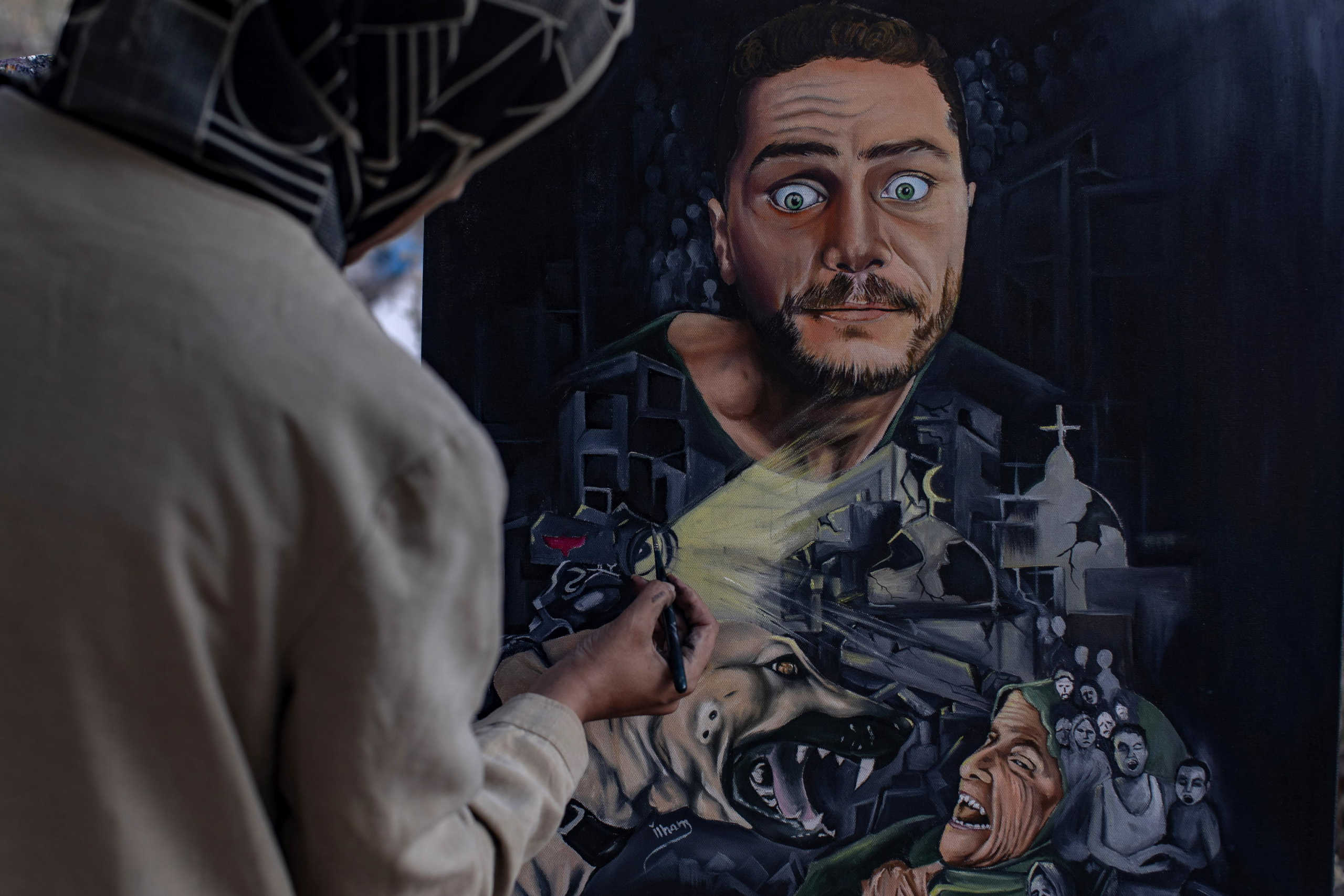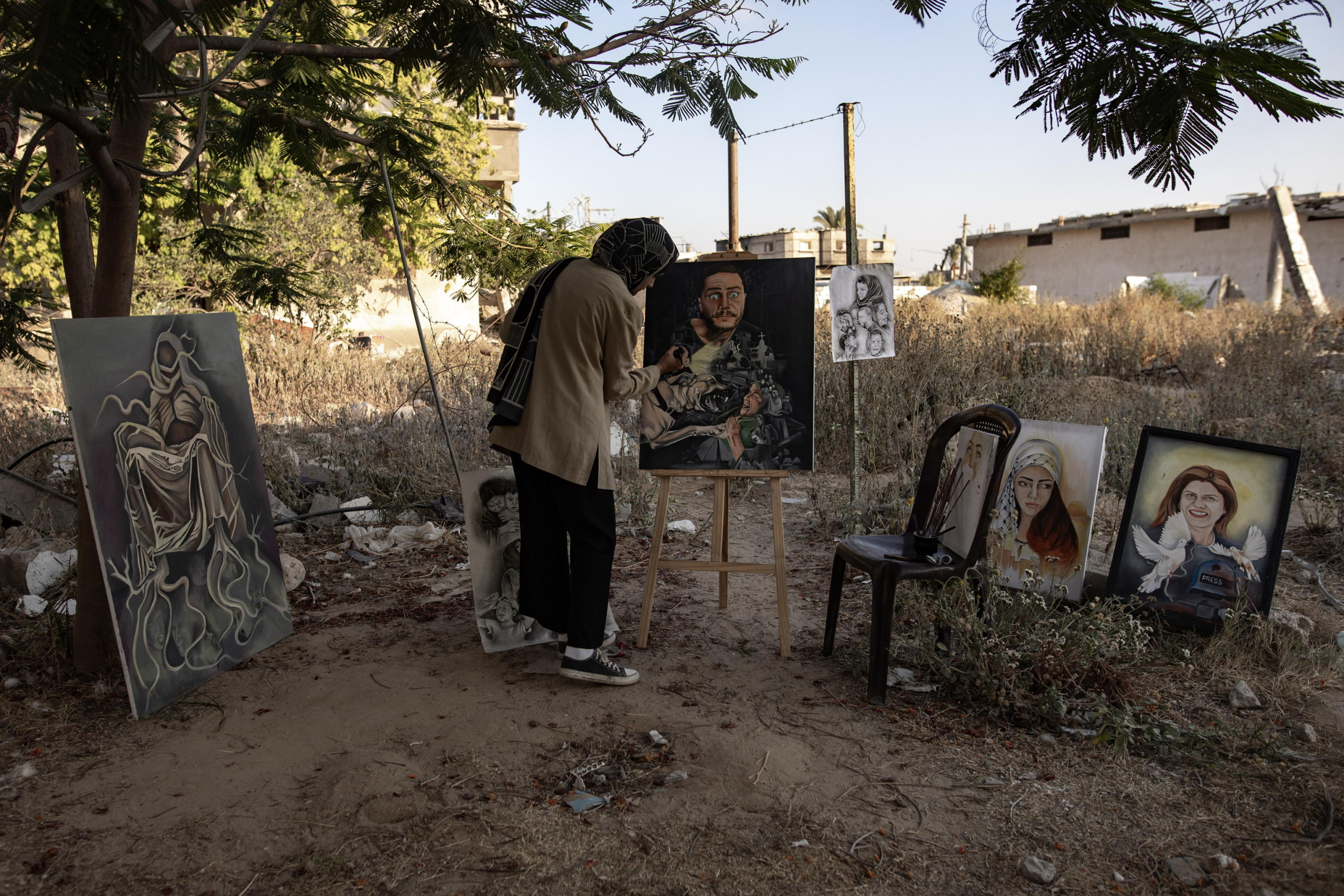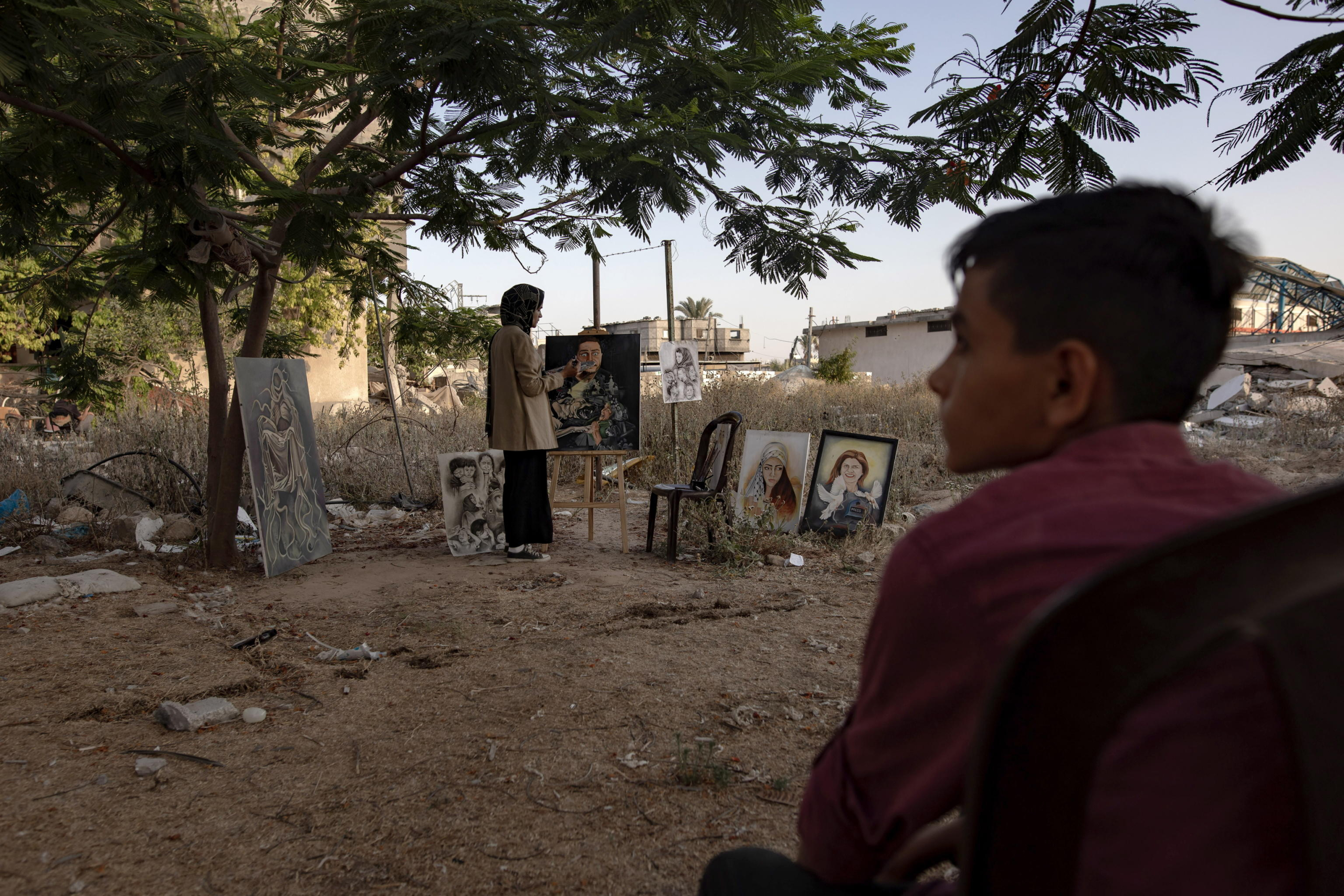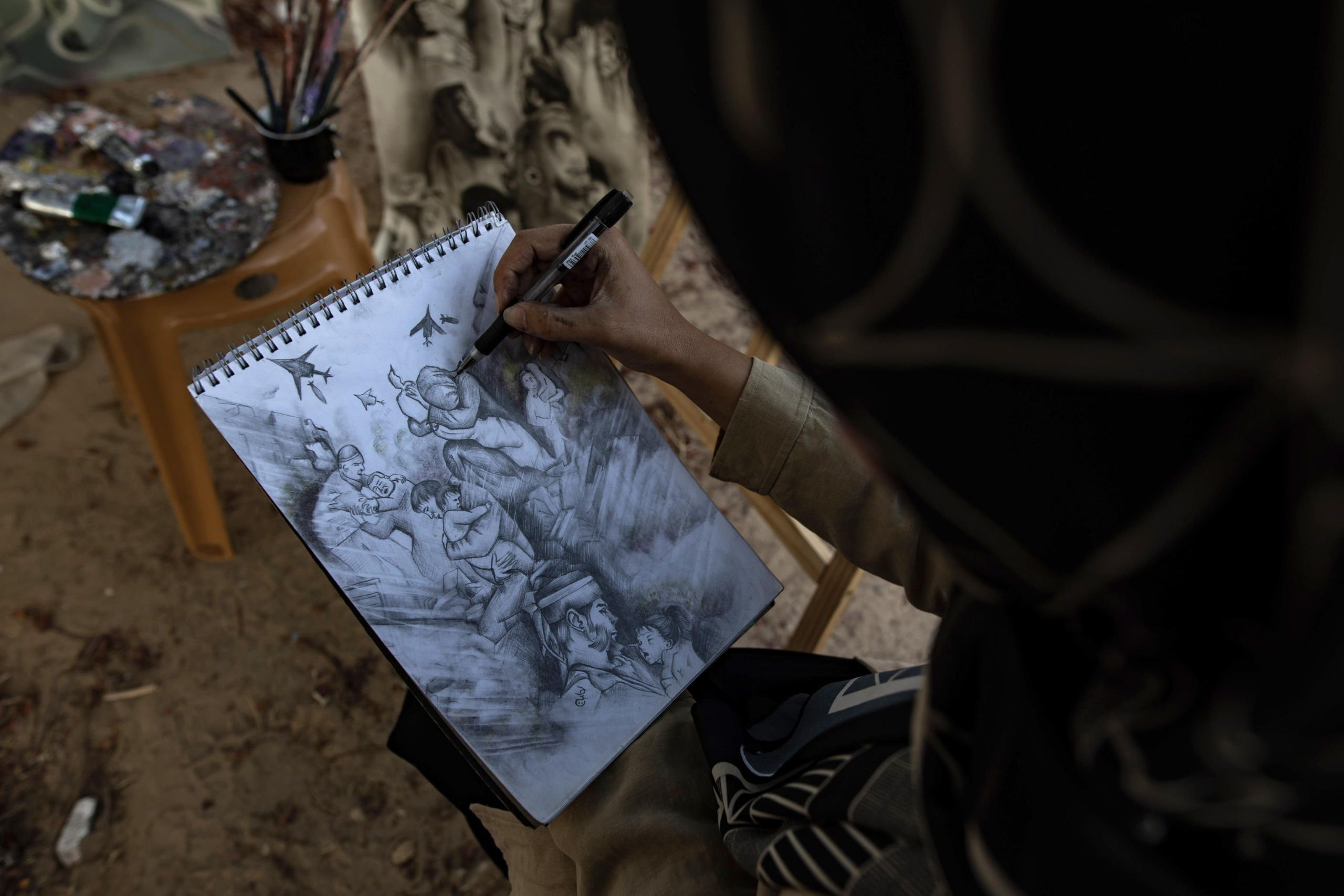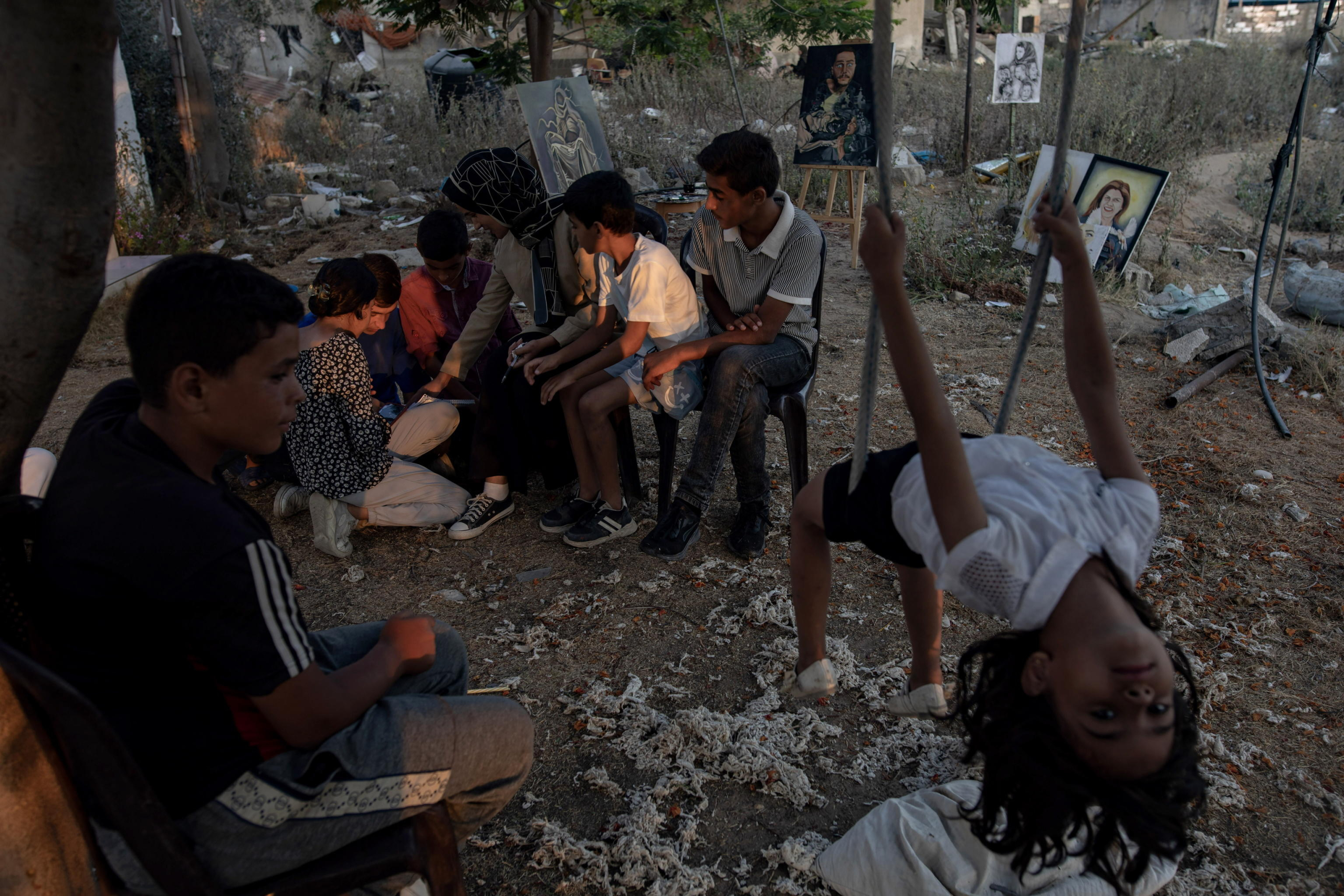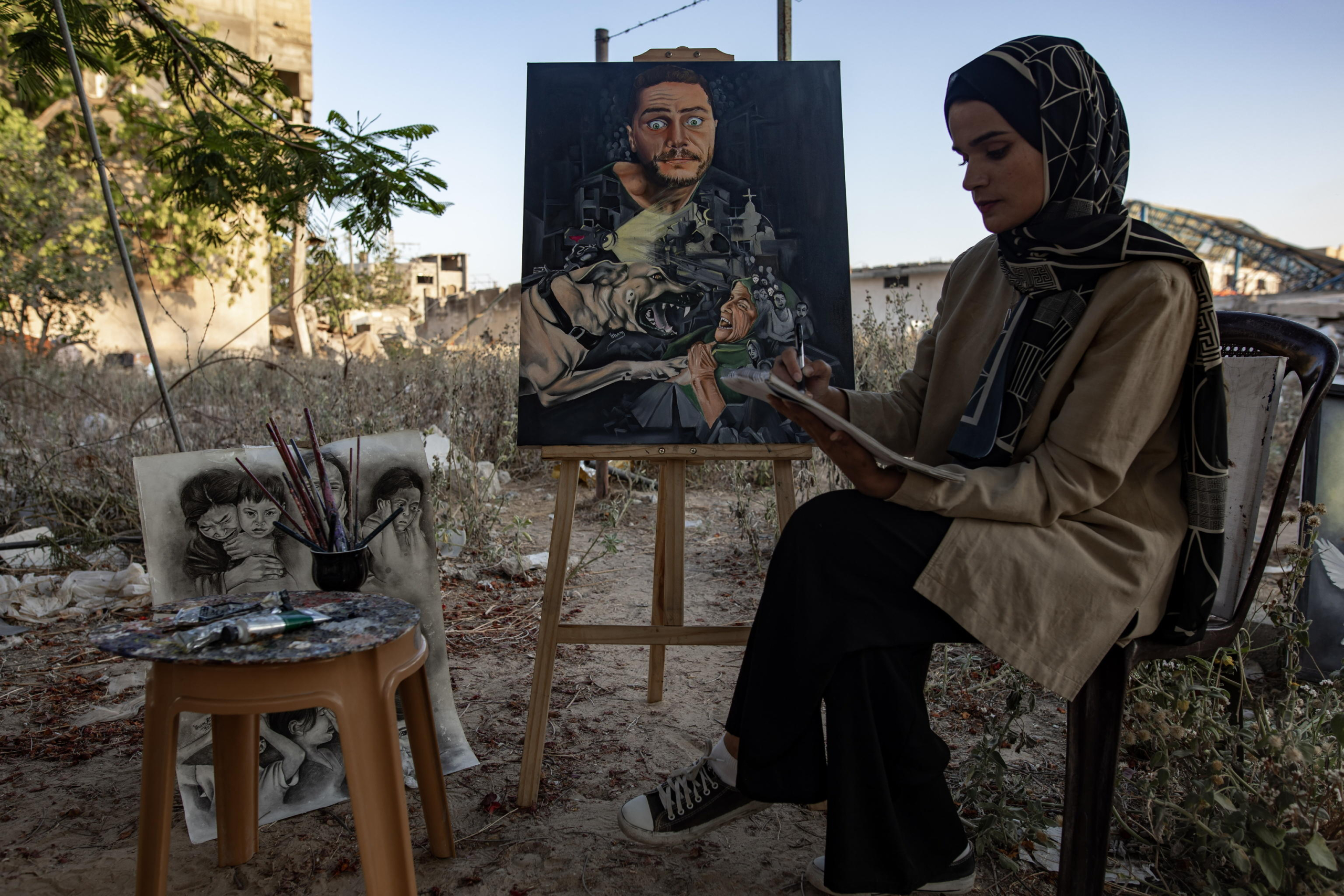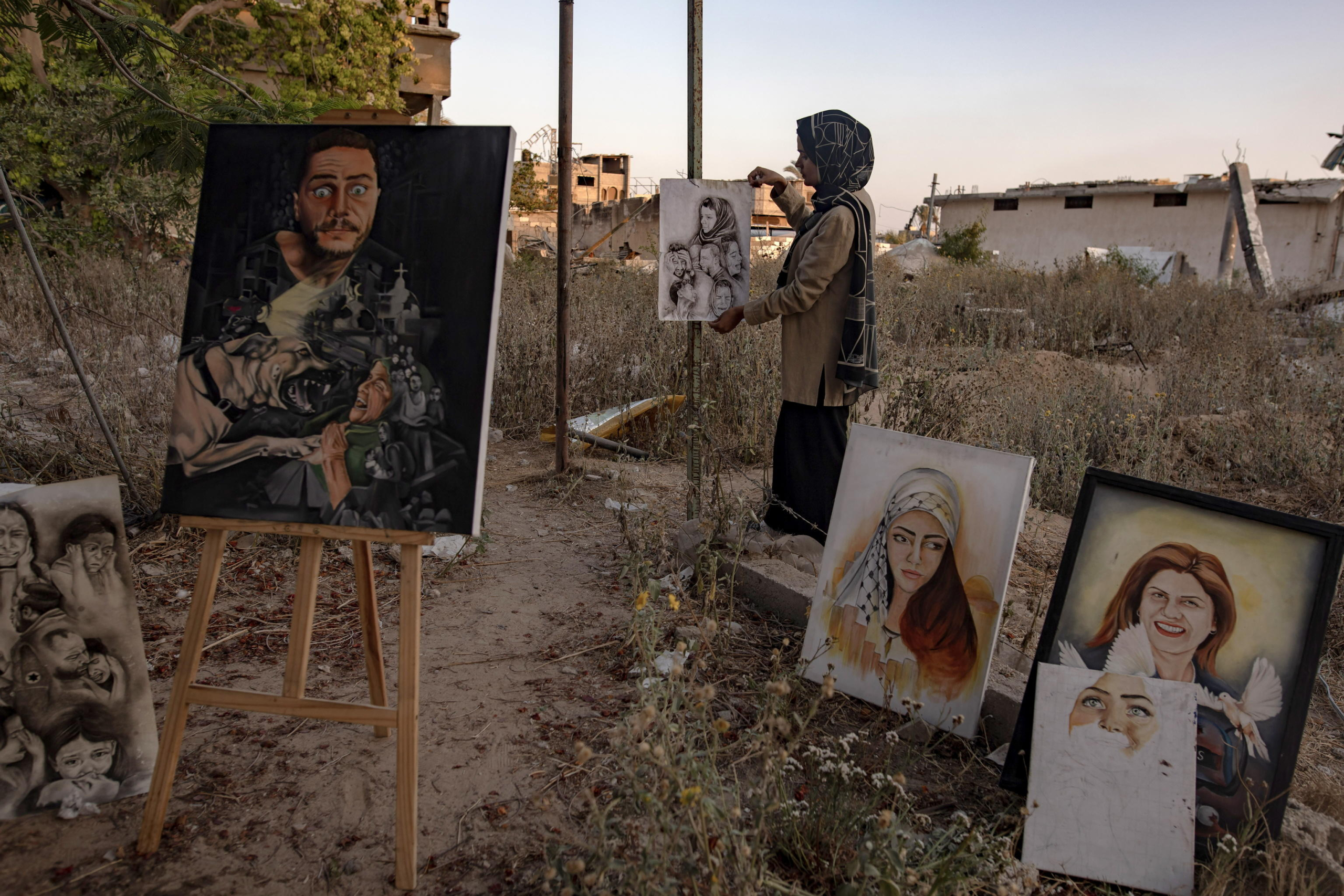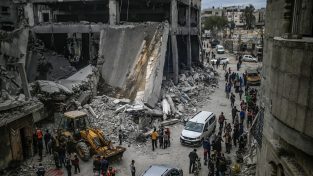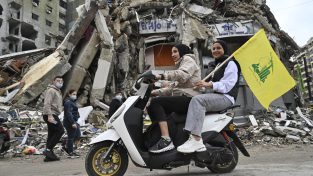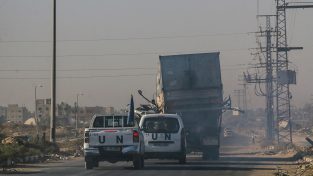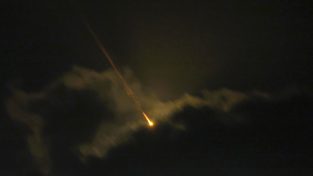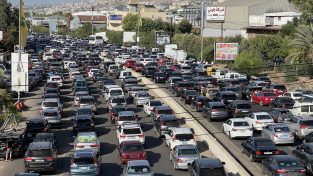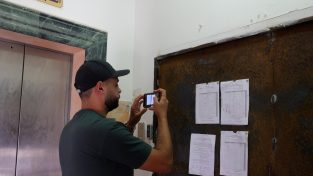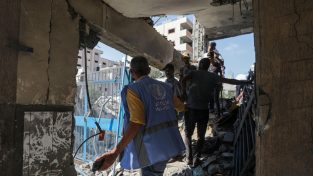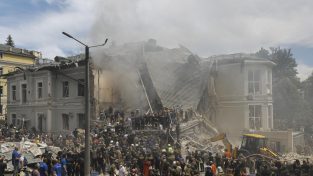Quadri da un campo profughi raccontano la guerra in Terra Santa
L’artista palestinese Ilham Al-Astal raccoglie nelle sue opere gli eventi e i dolori provocati dal conflitto bellico. La sua casa, al campo profughi di Khan Yunis, è stata distrutta dai bombardamenti
Continuano, incessanti, gli attacchi israeliani sulla Striscia di Gaza. Secondo il ministero della Sanità, sono oltre 38 mila i palestinesi uccisi dall’inizio della guerra fra Israele e Hamas lo scorso 7 ottobre. Il 70% delle vittime degli attacchi israeliani erano donne e bambini.
In questo contesto, 1,9 milioni di persone sono sfollate in tutta la Striscia, come affermato da Sigrid Kaag, coordinatrice umanitaria dell’Onu per Gaza. Preoccupano gli ordini di evacuazione e i bombardamenti perpetrati nelle aree ritenute “zona umanitaria sicura”, come il campo profughi di Al Mawasi di Khan Yunis, dove la settimana scorsa sono morte 90 persone e 300 sono rimaste ferite.
L’ong Oxfam Intermón ha denunciato in un report pubblicato giovedì 18 luglio l’utilizzo dell’acqua da parte di Israele come arma di guerra contro la popolazione palestinese. Infatti, i dati rilevano una riduzione del 94% nell’accesso all’acqua potabile dentro la Striscia: in media 4,74 litri al giorno per persona. Questo come risultato del blocco degli aiuti internazionali, la distruzione sistemica delle infrastrutture e il taglio delle forniture idriche.
Il Commissario generale dell’UNRWA, Philippe Lazzarini, in un post su X del 17 luglio ha comunicato che almeno 8 scuole di Gaza sono state colpite dagli attacchi israeliani negli ultimi 10 giorni.
Tra le macerie e le perdite di amici e familiari, la vita va avanti, come possibile, negli spazi rimasti instabilmente e temporaneamente abitabili. Ilham Al-Astal, un’artista 28enne sfollata nel campo profughi di Khan Yunis, plasma nei suoi quadri la sofferenza vissuta in questi mesi di conflitto armato, riproducendo gli avvenimenti e i sentimenti prodotti dalla guerra.
